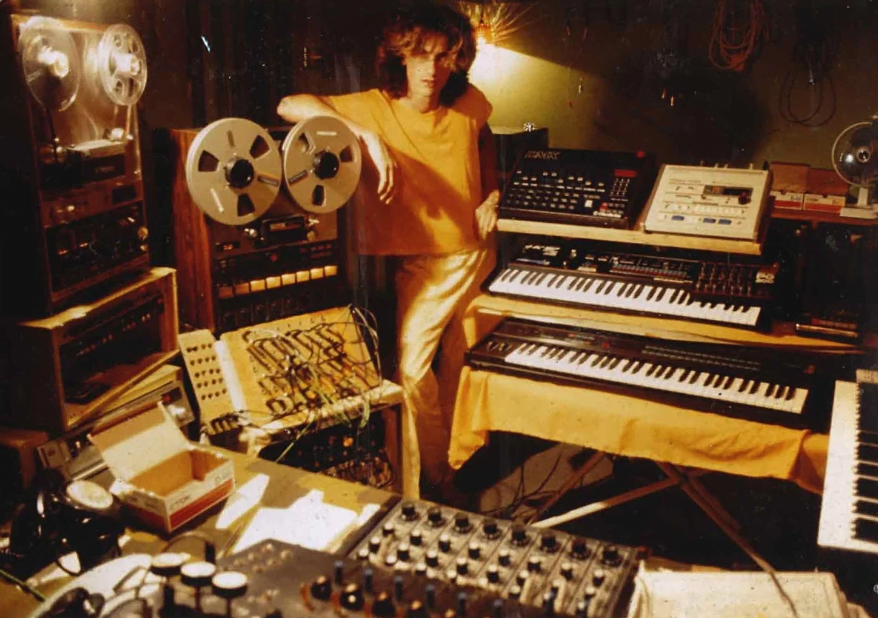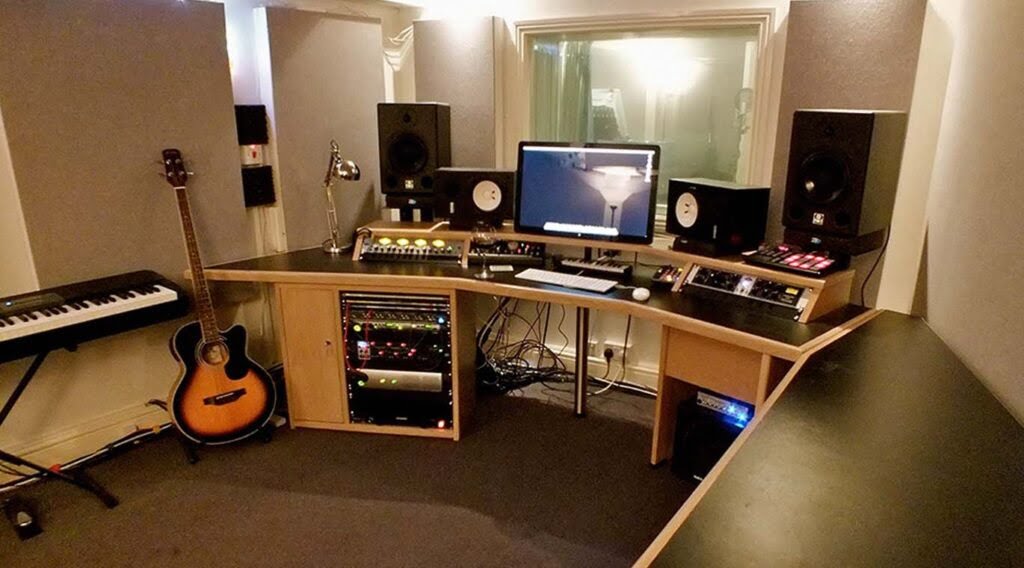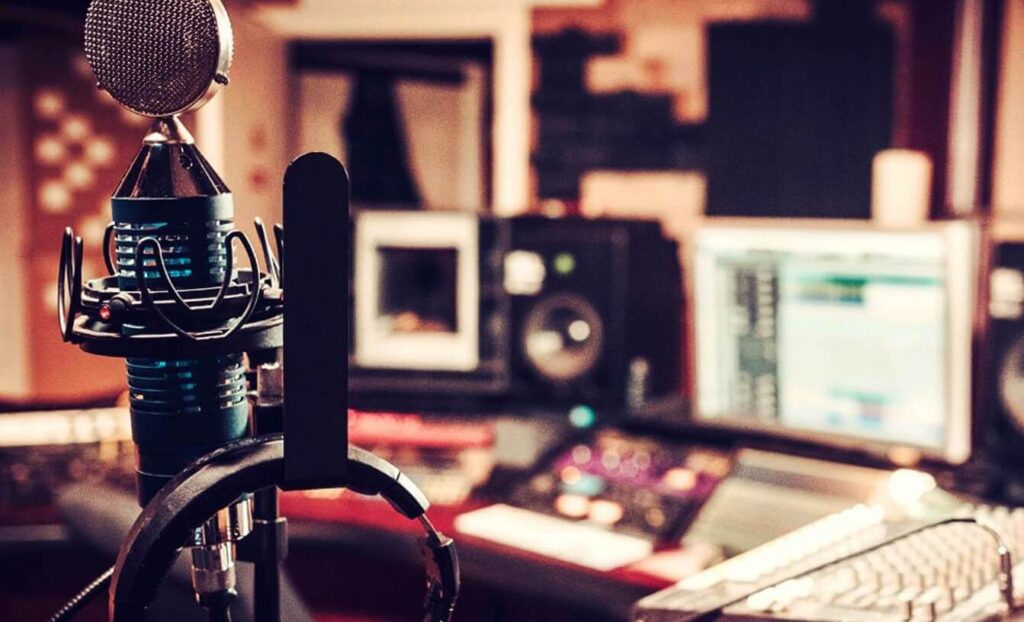Music production is born where art meets technique. The process of creating songs and albums is embedded within the studio, and this process determines the quality and impact of the music. Recording, arranging and finalizing a song brings together many elements and makes it a work of art that touches the listener.
Making music in a studio environment is a peak of creativity for artists. The meticulous work of sound engineers brings the musicians’ performances to life, and each note, each beat is carefully crafted. Machines, instruments and human voices are skillfully combined to create a unique sound universe.
The art of music production requires creativity and sensitivity as well as technical knowledge. Decisions about how to place each instrument and sound, what effects to use, and what edits to make at which stage reflect the producers’ vision. This process is a journey of discovery that goes deep into the music and affects listeners in a way that makes them feel the artist’s thoughts and feelings directly.
Ultimately, music production is not just a technical process but also an expression of art. Exploring the art that lies behind studio doors provides a fascinating experience for anyone who loves music. Each track tells a story and each album reflects the soul of the artist. Therefore, understanding and appreciating every stage of music production is the first step to deeply exploring the rich world of music.
The Producer’s Role: Shaping Soundscapes
In the world of music, producers play an important role not only through their technical mastery, but also through their ability to determine the aesthetic and emotional depth of the music. Producers are the people who determine how a song or album will sound and how it will affect the listener’s experience. Here are a few highlights of how a producer shapes soundscapes:
- Sound Aesthetics and Management: Producers ensure the correct balance and placement of each instrument and voice. Decisions such as which instrument will play in which frequency range and which effects will be used determine the general aesthetics of the soundscape.
- Editing and Mixing Process: After the songs are recorded, producers edit and mix the audio. In this process, the clarity, depth and overall quality of sounds are improved. Producers ensure that each instrument and vocal track is in harmony with the others.
- Creative Direction: Producers collaborate with artists to determine what story the songs or albums will tell. Decisions such as which instruments to emphasize, which parts to strengthen, shape the emotional and thematic depth that the music wants to convey.
- Technological Knowledge and Application: Producers have a deep knowledge of sound engineering and recording techniques, using studio equipment and software skillfully. This technical knowledge increases the technical quality and overall impact of the music.
As a result, producers channel music not only on a technical platform but also as an artistic expression. The process of shaping soundscapes ensures that each track is designed to touch the listener. This important role of producers largely determines the quality and impact of music and creates a bridge between listeners and artists.
Recording Techniques: Analog and Digital
Music recording techniques have changed and evolved significantly over time. The two basic techniques most used in recording studios today are analog and digital recording. Each has its own advantages and features:
Analog Recording: Analog recording is a technique that physically records and stores the direct sound waves of music. This method is usually accomplished through magnetic tapes or analog recording consoles. Some advantages of analog recording are:
- Natural Temperature and Color: Analog recording delivers natural warmth and color because it captures sound waves directly. This is especially preferred in some genres (e.g. the nostalgic and natural feel of analog sounds).
- Sound Quality: Analog recording can offer a wider dynamic range and smoother transitions than digital recording in some cases. This can be particularly advantageous for recordings whose density and detail are important.
Digital Recording: Digital recording is a technique that records sound waves by converting them into digital data. This is accomplished using computers or digital recording devices. Some advantages of digital recording are:
- Greater Sensitivity and Accuracy: Digital recording allows audio to be captured with much more precision. This increases the accuracy and clarity of the recorded audio.
- Easier Editing and Manipulation: Digital recording allows you to easily edit, apply effects, and manipulate recorded sounds. This allows producers greater creative control.
When making a choice between analog and digital recording techniques, factors such as the type of music to be used, the desired sound character and studio equipment should be taken into consideration. Both techniques offer unique advantages and are frequently used together in production processes today.
This content can be a starting point for understanding recording techniques for anyone interested in music production. Understanding the differences between analog and digital recording can help you develop an in-depth understanding of sound quality and aesthetic preferences in music.
Mixing and Mastering: Balancing Tracks to Perfection
In music production, the mixing and mastering processes are critical steps that shape the final version of a song or album. Here are a few main points about the importance of these processes and how they are done:
Mixing Process: Mixing is the process of bringing together recorded sound sources (instruments, vocals, effects, etc.) in a balanced way. A mix engineer adjusts the volume, panorama (distribution of sound from right to left), frequency balance and effects of each instrument. Some of the main goals in the mixing process are:
- Balanced Mixing of Sounds: Each instrument and sound track is placed and balanced in harmony with the others.
- Optimizing Frequency Ranges: The frequency ranges of different instruments and voices are adjusted without overlapping and creating unnecessary competition with each other.
- Panoramic Placement: Accurate placement of sounds in the stereo field provides the listener with depth and spatial perception.
Mastering Process: Mastering is the process of preparing the final version of a mixed song or album and is usually done extremely carefully. The mastering engineer performs these steps:
- Adjusting Volume Levels and Dynamic Range: Adjusts the overall volume of songs and optimizes dynamic range.
- Improving Frequency Balance: During the mastering process, the overall frequency balance of the songs is adjusted and corrected when necessary.
- Final Touches and Formatting: Mastering generally ensures that songs are made suitable for different media formats (such as CD, digital streaming platforms).
Mixing and mastering processes play a critical role in preparing music professionally. Each step contains elements that determine the final quality of the song or album. A mixing engineer and mastering engineer work to best reflect the artist’s vision and listener experience.
Understanding the importance of these processes is an important step for anyone interested in music production. Understanding how mixing and mastering is done can help you make your music more impactful and impressive.
Studio Gear Basics: Microphones, Mixers and Software
Microphones: Microphones, the cornerstone of studio recordings, ensure that sound is captured accurately and clearly. Condenser microphones are ideal for detailed sounds, while dynamic microphones are preferred for loud instruments.
Mixers: Used to mix and process sounds coming from microphones, mixers are one of the main tools at the disposal of sound engineers. They allow controlling multiple audio sources with different inputs.
Software: Software, which is indispensable for music production in the digital age, allows editing, mixing and adding effects to sound recordings. Software such as Pro Tools, Logic Pro, Ableton Live are among the popular options.
If you are thinking of setting up your own studio, it is very important to choose the right basic equipment. Choosing a good microphone, a suitable mixer, and the software that suits you will help you turn your musical vision into reality.
Remember, music production is a personal journey and with the right equipment is an important step on the road to success. You can also take your musical talents further by establishing your own studio!
Producer Summary: Rick Rubin, Quincy Jones and Brian Eno
Rick Rubin: Rick Rubin is an American producer and music director who has achieved significant success in various musical genres. Known especially for his work in the field of hip-hop and rock music, Rubin has worked with big names such as Johnny Cash and Red Hot Chili Peppers. He is known for his minimalist production style and approach to highlighting artists’ unique voices.
Quincy Jones: A legendary figure in the music industry, Quincy Jones has built a career as both a producer and musician. Among the artists he has worked with are names such as Michael Jackson, Frank Sinatra and Aretha Franklin. He is known for his broad musical vision, arrangements, and innovative production techniques, and is respected for his contributions to the music industry, as well as Grammy awards.
Brian Eno: British musician, producer and composer Brian Eno is an important figure in the field of experimental music. He started his career as one of the founding members of Roxy Music, and later focused on his own solo works. Eno, who also works as a producer with famous artists, is known for his atmospheric sounds and innovative production techniques.
These three producers have deeply influenced artists and listeners alike through their long and influential careers in the music industry. Each of them has left a lasting mark and inspired the music world with their unique approaches.
See you in the next post,
Anil UZUN


